Wood Garden Edging Ideas: Creative Ways to Define Your Outdoor Space
Creating a beautiful garden goes beyond choosing the right plants and flowers. The edges of your garden play a significant role in giving your outdoor space a finished and polished look. Using wood for garden edging not only adds natural beauty but also provides practical benefits such as keeping soil and mulch contained.
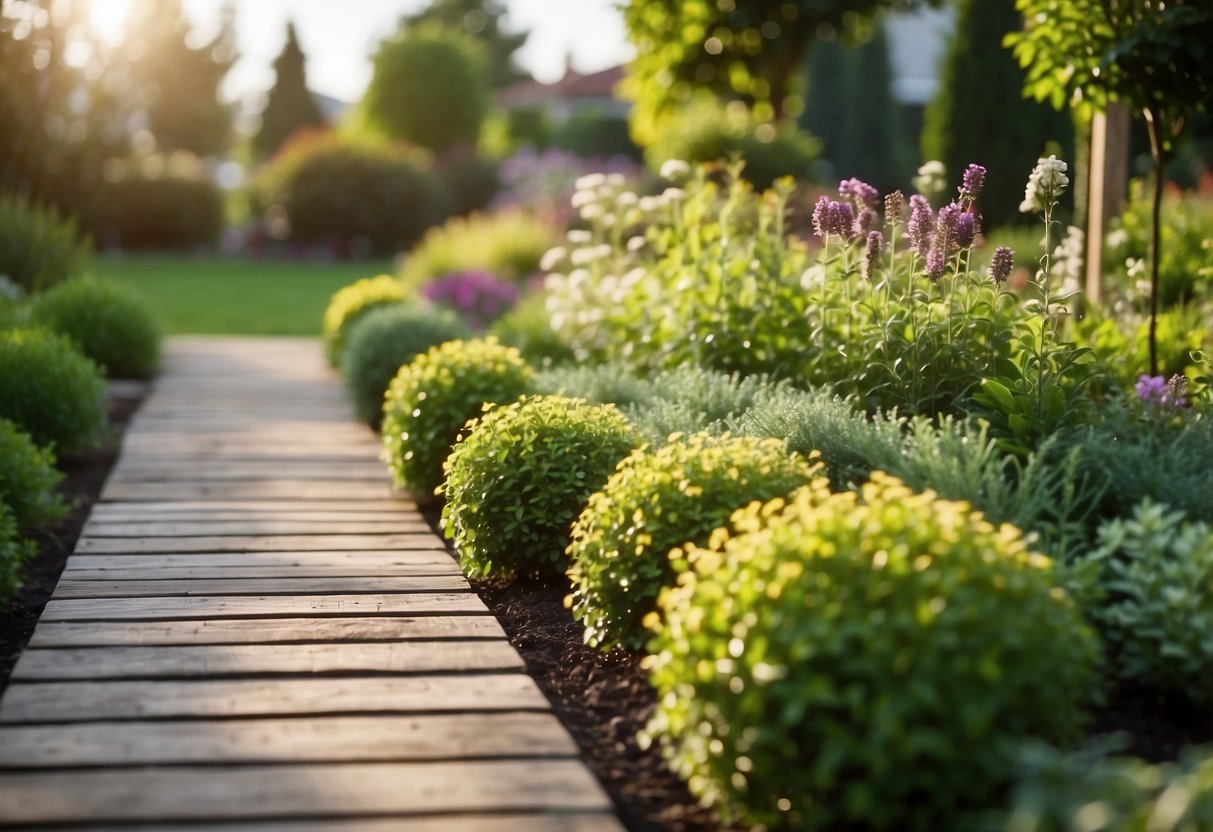
Are you looking for simple and creative ways to enhance your garden’s appearance? Wood garden edging ideas can transform your garden beds into stunning showcases. Whether you prefer a rustic charm or a more modern design, wood offers versatile options to match any style.
1) Log Borders

Log borders give your garden a rustic look. You can use whole logs or half logs, depending on the style you like. They work well for both straight lines and curved designs.
To install log borders, dig a shallow trench and place the logs in it. Secure them with stakes or additional soil. They offer a natural appearance and help separate different areas of your garden. If you want, you can even paint the logs to match your garden’s color scheme. Learn more about garden edging ideas from Bob Vila.
2) Stacked Stone Edging
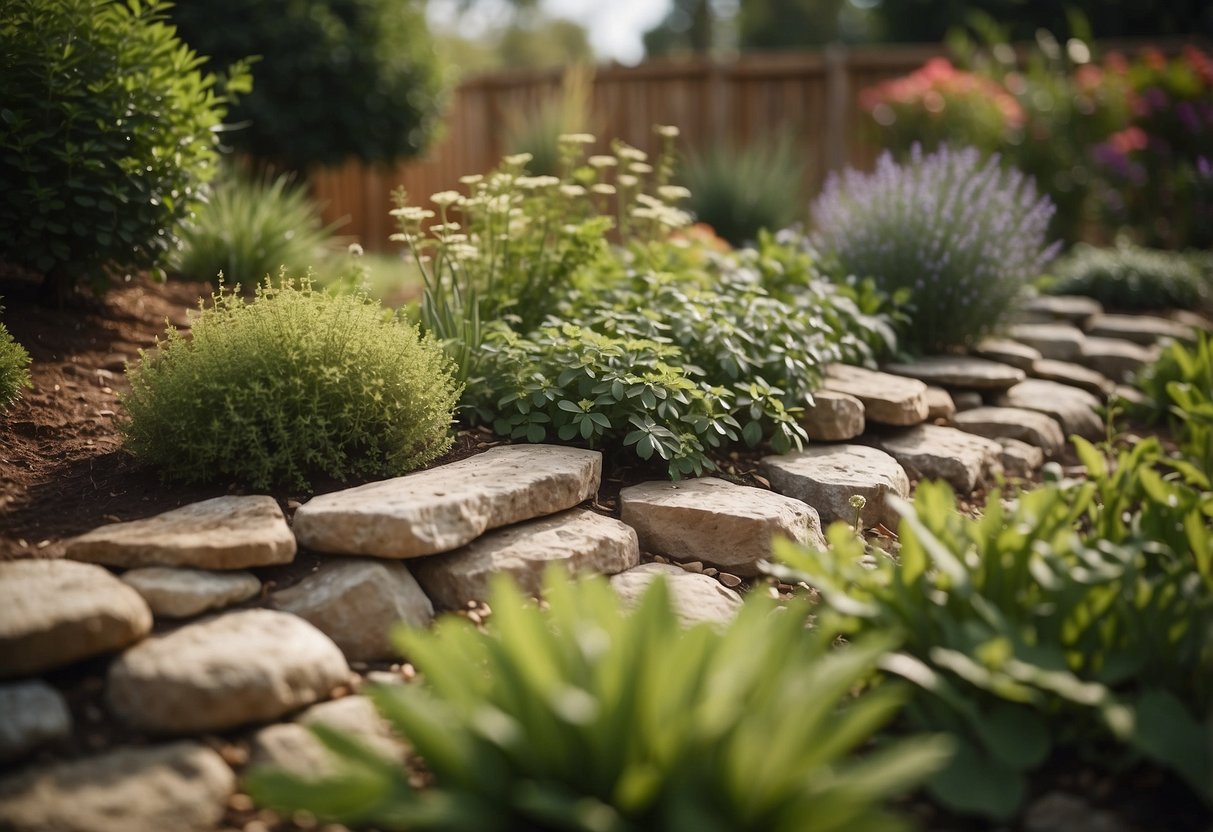
Stacked stone edging adds a rustic and natural look to your garden. To start, choose flat and uniform stones. These are easier to stack and create a stable border.
Position the stones carefully, ensuring they fit snugly together. This no-mortar method is great for creating raised beds or defining different areas.
Using natural fieldstones, flagstones, or large river rocks works well. It enhances the visual appeal and blends seamlessly with greenery. Adding stacked stone edging is a simple way to make your garden look polished and elegant.
For more details, check out these stacked stone garden border methods.
3) Railroad Tie Garden Edging

Railroad ties make great garden edging for a rustic look. They define garden zones while keeping soil and plants in place. They are thicker and heavier than landscape timbers.
Using railroad ties for edging is not just practical; it’s stylish too. Install them along walkways or garden beds for a neat finish.
4) Curved Redwood Edging

Curved redwood edging adds a soft, natural look to your garden. Redwood is a great choice because it’s naturally resistant to pests.
To install curved redwood edging, first shape the wood to match your garden’s curves. Make sure to dig a small trench for the wood to sit in.
For best results, use stakes to secure the redwood in place. Enjoy the beauty and durability of your garden’s new look!
5) Wattle Fencing

Wattle fencing is a beautiful and eco-friendly way to edge your garden. It has been used for thousands of years and involves weaving branches between upright stakes.
You can use materials found around your yard, making it a great sustainable choice for your garden. This type of fencing adds a charming, rustic look to any outdoor space.
If you want to learn more, visit Outdoor Happens’ guide or check out Rural Sprout’s instructions on how to create your own wattle fence.
6) Cedar Plank Garden Border

Cedar planks make a beautiful and durable choice for your garden border. Cedar is naturally resistant to decay and insects, which means it can last a long time with minimal maintenance.
To create your cedar plank border, start by marking the edge of your garden. Dig a shallow trench along the marked line. Place the cedar planks in the trench, ensuring they are level and secured. This method not only looks great but also helps define your garden space in a practical way.
7) Gabion Wall Edging

It’s amazing how versatile gabion walls can be for garden edging. These structures are made by filling wire cages with rocks, concrete, or other materials.
Gabion walls not only create a sturdy edge but can also add a modern look to your garden. You can even use them as seating areas, making your garden both functional and stylish.
Gabion walls are eco-friendly and durable. They are great if you want a natural and robust way to define garden areas. Check out some gabion wall ideas for inspiration!
8) Reclaimed Wood Borders
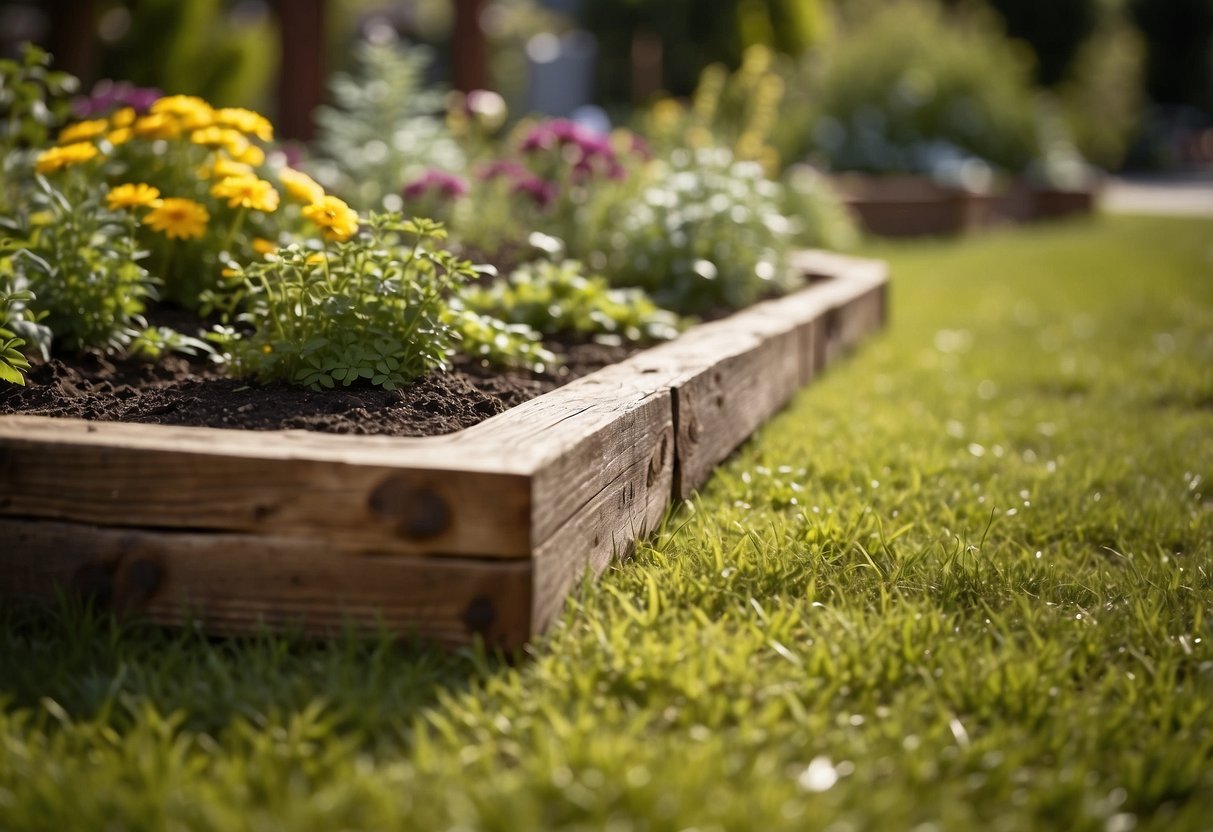
Using reclaimed wood for garden edging adds charm to your garden.
You can use wood from old fences, barns, or even pallets.
Cut the wood to your desired length and dig a shallow trench where you want the border.
Line up your wood pieces in the trench and secure them with stakes or screws.
This reclaimed wood method is eco-friendly and gives a rustic look to your garden.
9) Pallet Wood Garden Edge

Using pallet wood for garden edging is an eco-friendly and cost-effective choice.
You can find pallets for free or at a low cost from local businesses.
Disassemble the pallets carefully to get usable wood pieces.
Place the wood pieces along the garden bed edge to create a rustic look.
This kind of edging not only defines your garden space but also adds character.
Repurposing pallet wood reduces waste and provides a unique, handcrafted feel to your garden.
Enhance the appearance by treating the wood with a weather-resistant sealant.
10) Herringbone Wood Edging
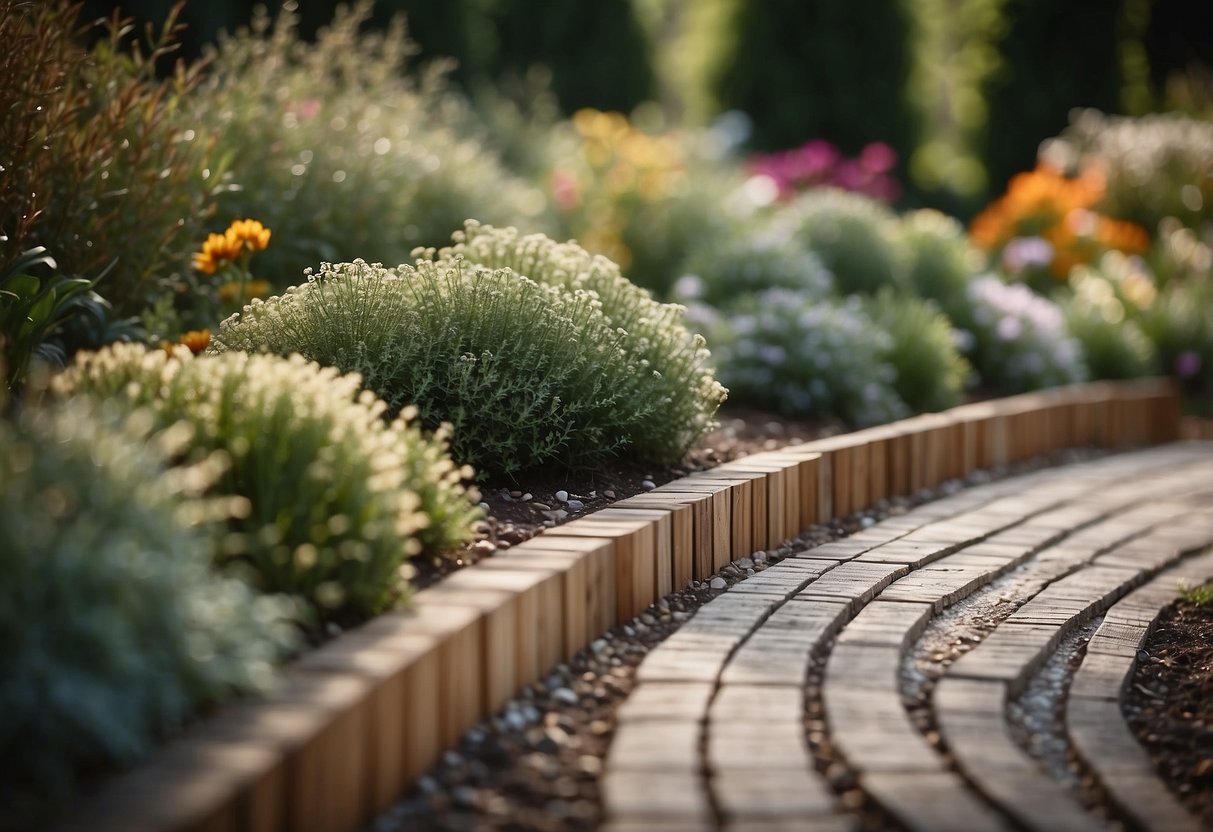
Herringbone wood edging is a stylish way to frame your garden beds. This design uses small pieces of wood arranged in a zigzag pattern.
The herringbone pattern is not only visually appealing but also sturdy. It adds a touch of sophistication to any garden space with its unique look.
You can customize the length and width of the wood pieces to fit your garden perfectly. This makes it a great DIY project for adding character to your outdoor areas. For instructions, check out these plans.
Benefits of Wood Garden Edging

Wood garden edging offers several advantages that cater to both the aesthetic and functional needs of your garden. It enhances the appearance of garden beds while providing a durable, long-lasting solution.
Aesthetic Appeal
Wood garden edging can greatly improve the look of your garden. It adds a natural touch that blends well with plants and flowers.
Using wood allows for customization. You can choose different types of wood, stains, and finishes to match your garden’s style. For example, cedar wood is popular for its warm hue and ability to fit both modern and rustic designs.
Wood’s color and texture provide a pleasing contrast against greenery. This can help define garden beds and create clean lines that make your yard look tidy and well-maintained.
A well-chosen wood edging can be a focal point in your garden. It can guide the eye through the landscape and highlight specific areas, such as flower beds or pathways.
By opting for wood, you can create a garden that feels cohesive and thoughtfully designed.
Durability and Longevity
Wood garden edging is not only attractive but also strong and durable. Certain types of wood, like teak or cedar, are resistant to rot and insect damage. This makes them ideal choices for outdoor use.
Properly treated wood can withstand harsh weather conditions. You can seal or stain the wood to protect it from moisture, UV rays, and cold temperatures. This helps prolong its life, ensuring you won’t need to replace it often.
Wood is a sturdy material that can serve functional purposes too. It can help keep soil in place and prevent erosion. This is particularly useful for raised garden beds or sloped areas.
By choosing wood for your garden edging, you invest in a material that will last for years, saving you time and money in the long run. This makes it a practical choice for busy gardeners who want both form and function.
Different Types of Wood for Garden Edging
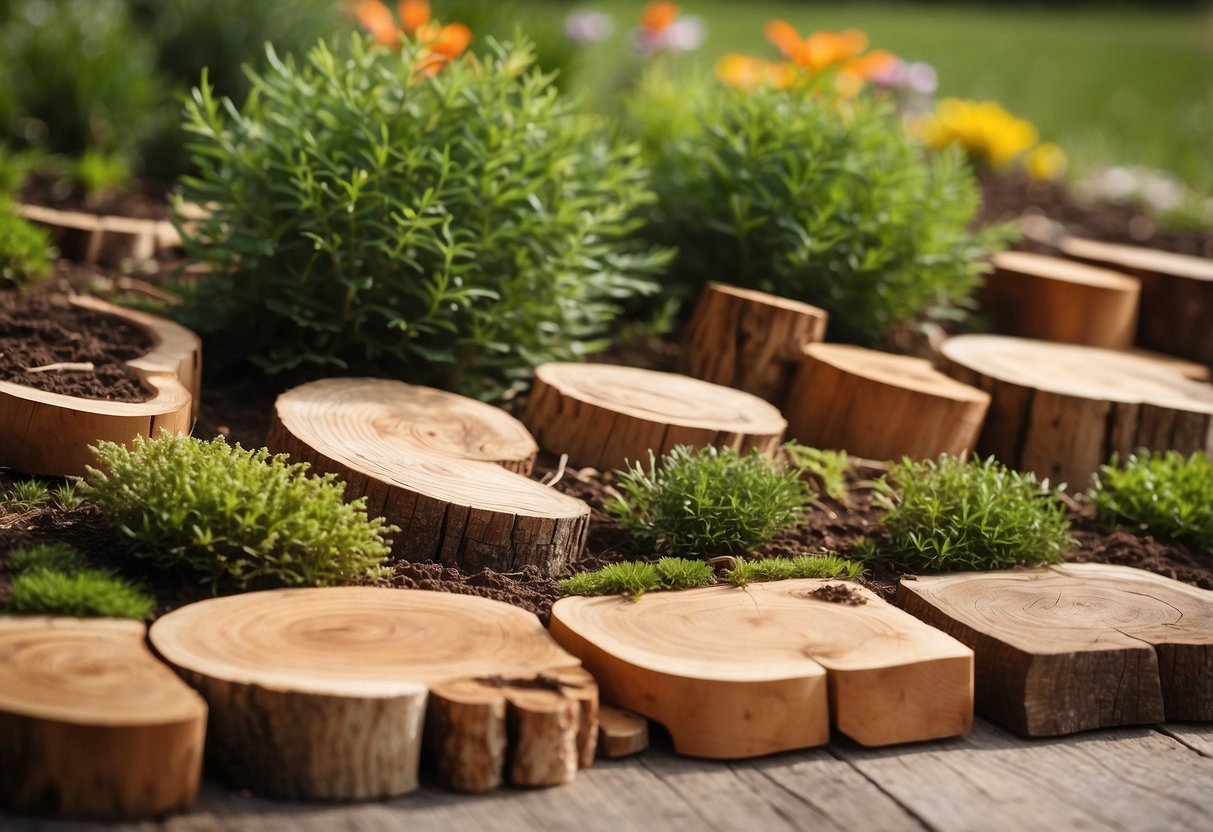
When choosing wood for garden edging, you want to consider durability, appearance, and environmental impact. Let’s look at some common types of wood used for this purpose.
Pressure-Treated Wood
Pressure-treated wood is treated with chemicals to make it resistant to decay, insects, and moisture. This makes it a popular choice for garden edging because it lasts longer than untreated wood.
Make sure to use pressure-treated wood marked safe for gardening to avoid harmful chemicals leaching into your soil. This type of wood is often available in various sizes and can be easily cut to fit your garden’s dimensions.
Pressure-treated wood is relatively affordable and widely available at most home improvement stores. However, you may need to replace it eventually, as the treatment wears off over time.
Cedar and Redwood
Cedar and redwood are naturally resistant to pests and rot, making them excellent choices for garden edging. They typically last longer than other types of wood without needing chemical treatments.
Cedar has a pleasant aroma and a rich color that can enhance the look of your garden. It’s lighter in weight, making it easier to handle during installation.
Redwood is a bit denser and often more expensive, but it offers a luxurious reddish hue and durability. Both woods can weather naturally to a silver-gray patina, which many people find attractive.
Reclaimed Wood
Reclaimed wood is an eco-friendly option that utilizes wood from old buildings, fences, or other sources. It adds a rustic charm to your garden and reduces waste.
Using reclaimed wood can save you money, but it’s crucial to check that it hasn’t been treated with harmful chemicals. Sand down any rough spots and remove old nails or screws before installing.
Each piece of reclaimed wood has a unique character, adding a personal touch to your garden. It might take more time to find suitable pieces, but the result can be rewarding and environmentally friendly.







